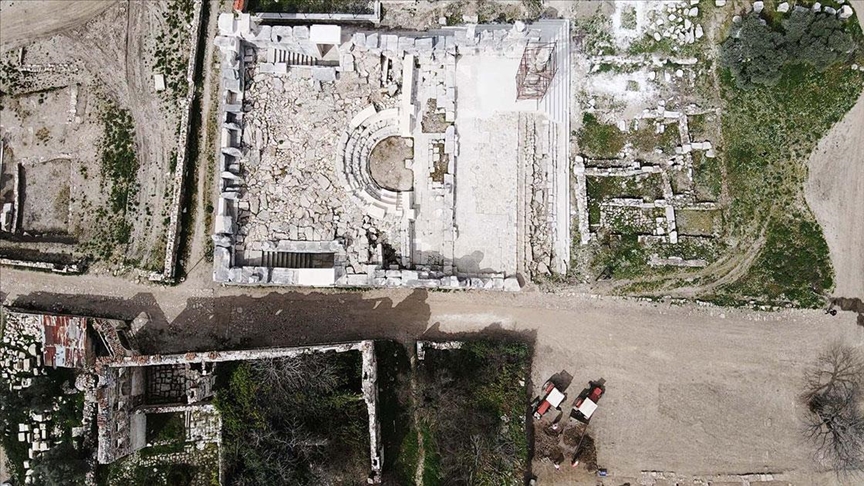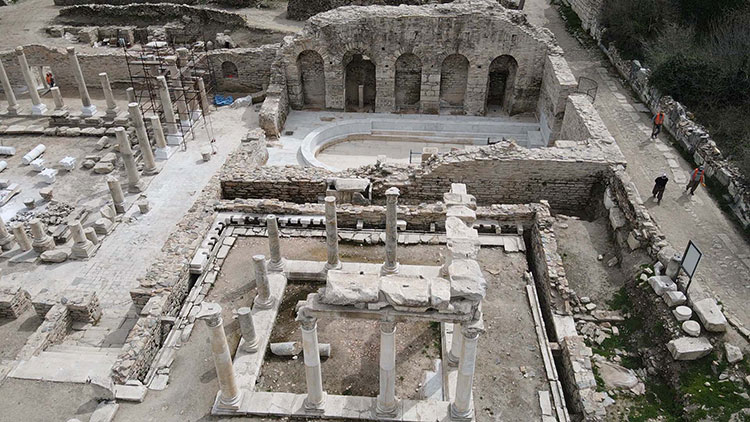
The 2200-Year-Old Assembly Building of Stratonikeia, The City of Gladiators, will Return to its Old Days
The 2200-year-old assembly building of the Ancient City of Stratonikeia, known as the “city of gladiators” in the Yatağan district of Muğla and included in the UNESCO World Heritage Tentative List, is being restored to its former glory with meticulous work carried out under the “Legacy for the Future” project.
This unique ancient city, bearing traces from the Hellenistic, Roman, Byzantine, Principalities, Ottoman, and Republican periods, is considered among the world’s largest marble cities. The team led by Prof. Dr. Bilal Söğüt, Head of the Stratonikeia and Lagina Excavation Committee, continues the excavation and restoration work in the ancient city for 12 months without interruption.

The assembly building, one of the most central structures of the city, attracts attention with its inscriptions containing the calendar of the ancient philosopher Menippos and the price list of products sold in Stratonikeia during the Roman period. Prof. Dr. Söğüt says, “This place is important both for being an assembly building and for having inscriptions from the ancient and Ottoman periods.”
Within the scope of the restoration works carried out with the understanding of “leaving a legacy for the future,” the seating rows, entrance doors, and columns of the assembly building are being restored in accordance with their original form. Visitors will be able to rest on the steps where the ancient deputies sat and breathe in the atmosphere of history.

In addition to the restoration works, important details such as the surrounding wall and portico arrangement of the building are being unearthed in the excavations carried out on the south side of the assembly building. Prof. Dr. Söğüt emphasizes the importance of the works in the region by saying, “We continue both excavation and restoration work in many regions of the city.”
The assembly building is an important structure showing that Stratonikeia was a city-state in ancient times. The presence of Latin, Greek, and Ottoman inscriptions on the walls of the building reveals the importance of the city in different periods.
You may also like
- A 1700-year-old statue of Pan unearthed during the excavations at Polyeuktos in İstanbul
- The granary was found in the ancient city of Sebaste, founded by the first Roman emperor Augustus
- Donalar Kale Kapı Rock Tomb or Donalar Rock Tomb
- Theater emerges as works continue in ancient city of Perinthos
- Urartian King Argishti’s bronze shield revealed the name of an unknown country
- The religious center of Lycia, the ancient city of Letoon
- Who were the Luwians?
- A new study brings a fresh perspective on the Anatolian origin of the Indo-European languages
- Perhaps the oldest thermal treatment center in the world, which has been in continuous use for 2000 years -Basilica Therma Roman Bath or King’s Daughter-
- The largest synagogue of the ancient world, located in the ancient city of Sardis, is being restored











Leave a Reply